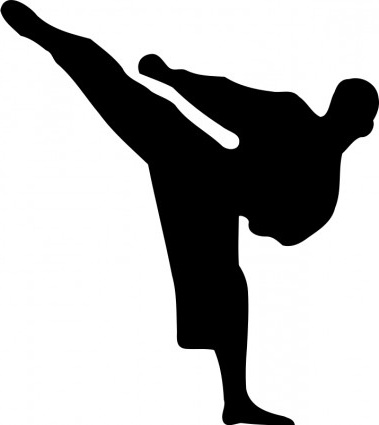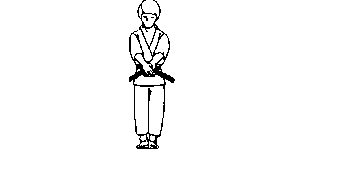-
“My experience with Shorinkan Family Karate has been fantastic! The best part is that my daughter and I get to learn Karate together. I have seen a great deal of self confidence in my daughter since starting at Shorinkan. We would recommend this Dojo to everyone. Thank you Senseis Paul & Michelle.” ~ Anny & Sophia
Register Today!
GENERAL OVERVIEW OF KARATE TRAINING PROGRAM
The style of karate taught in our dojo is Traditional Okinawan Shorin-Ryu Shorinkan, as developed hundreds of years ago in the village of Shuri, Okinawa, Japan. It is also known as Kobayashi-Ryu. Approximately 80% of all karate systems in the world today were derived from the Okinawan Shorin-Ryu Karate system. This classical system of martial arts uses both hands and feet evenly for a well-rounded system of self defense.
Lil’ Dragons
This is a pre-karate program which emphasizes coordination & life skills. Much of their training is directed toward the mental and physical discipline along with self-defense, personal responsibility, and confidence.
Beginning
We focus on elementary karate skills, flexibility, muscular and cardiovascular development, basic self defense and basic Japanese language. This gives the student a good foundation for advancement to a more complex and demanding training schedule.
Intermediate
This class begins the deeper study of kata (form or predetermined moves), more aggressive self-defense techniques, jujitsu, advanced kicking and punching and includes a more rigorous workout.
Advanced
Here we study kata in great depth and begin execution of hidden techniques and awareness training.
Weapons
The study of the Okinawan Art of Weaponry.
Our martial arts program provides overall conditioning for men, women and children regardless of age, sex, occupation or physical ability. Anyone can benefit from karate and martial arts training. Each student trains and progresses at their own pace with personal attention from the instructor(s). Traditional karate has something to offer everyone. It is as unique as the individuals who study traditional Karate or Kobudo. The many aspects of martial arts training: self defense, self confidence, physical conditioning and self-discipline are all tailored to the individual needs of the student.
Bunkai (pronounced boon-ki [long i sound]) is the
“Practical Application” of a move in a kata.
We place much emphasis on this. There are virtually unlimited
applications to any particular move. We encourage our students to
“think outside the box.” If one studies kata and bunkai on a continual
basis, it helps prepares you for any situation.Watch the last fight scene in Karate Kid 3 to see a demonstration of this.
The ONLY limitations are those, which are self-imposed.
Shorin-Ryu Shorinkan Kihons and Katas
Kihons
Kihon Ippon
Kihon Nihon
Kihon Sanbon
*Fukyu No Kata*
Kihon Yonbon
Kihon Gobon
Kihon Rukubon
Katas
Pinan Shodan
Pinan Nidan
Pinan Sandan
Pinan Yondan
Pinan Godan
Naihanchi Shodan
Naihanchi Nidan
Naihanchi Sandan
Passai Sho
Passai Dai
Kusanku Sho
Kusanku Dai
Chinto
Gojushiho
Gorin
Additional Katas
Fukyu Kata Ichi
Fukyu Kata Ni
Geki Sai Dai Ni
Wansu
Kyozai
Fukyu Kata Sandan
Wankan
Rohai
Annan
Jion
Ananku
Shorin-ryu Shorinkan
BELT COLORS
Different Shorinkan schools may have slight variations on the colors they use to distinguish belt rankings.
Here at Shorinkan Family Karate we use the following system:
White Belt – 9th Kyu
Yellow Belt – 8th Kyu – Levels 3, 2, 1
Orange Belt – 7th Kyu – Levels 3, 2, 1
Blue Belt – 6th Kyu – Levels 3, 2, 1
Purple Belt – 5th Kyu – Levels 3, 2, 1
Green Belt – 4th Kyu – Levels 3, 2, 1
Brown Belt – 3rd Kyu
Middle Brown Belt – 2nd Kyu
High Brown Belt – 1st Kyu
Black Belt – 1st Degree – Shodan
2nd Degree – Nidan
3rd Degree – Sandan
etc…
Karate
Call now for a FREE lesson
Visit our dojo and experience Traditional Shorin-ryu Karate for yourself. Call Today!
Contact
Address: 722 Main St. Cañon City, Colorado
Call: (719)276-0393
Email: [email protected]
Copyright ©2023 Articles


